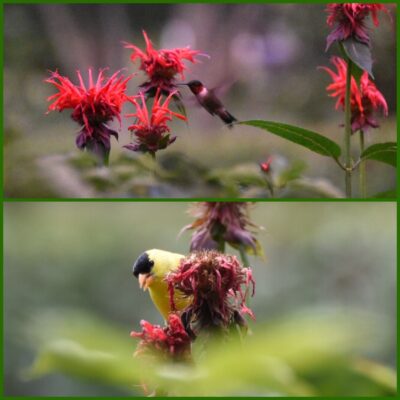Join the Barrington Pollinator Pathway!
You can make a big difference in your own backyard by joining Northeastern Pollinator Pathway, a regional project to create public and private pesticide-free corridors of native plants that provide nutrition and habitat for pollinating insects and birds. Barrington’s Pollinator Pathway already has many members. Join us and discover how you can create friendly habitats for birds, bees and butterflies!
Register for the Pollinator Pathway Tour – Sept. 15, 2024
Coming this autumn… our first-ever Pollinator Pathway Tour, in partnership with the Barrington Farm School! This tour breaks the mold of the traditional garden tour. In addition to visiting well-established gardens you’ll have a chance to see gardens in progress, discuss successes and challenges with fellow gardeners, and learn about the Land Trust’s new pollinator meadow at Johannis Farm Wildlife Preserve.
Learn more and Register for the Tour!
Volunteer for the Town’s Demonstration Resilience Garden
The Town of Barrington is establishing a Demonstration Resilience Garden in Town Center. You can join the effort to create a beautiful and resilient teaching garden filled with pollinator-friendly native plants. You don’t need any special knowledge to volunteer, and you can tailor your volunteer hours to your availability.
Register to volunteer with the Demonstration Resilience Garden
Download the Town’s Volunteer Release Form
The project has been designed in collaboration with volunteers from the Barrington Garden Club, the Barrington Land Conservation Trust, the Barrington Public Library, the Peck Center, the Barrington Resilience and Energy Committee, the Barrington Open Space Committee, the Barrington Pollinator Pathway Committee, and youth leaders from Barrington. The project is funded through a People’s Garden Grant from the Eastern Rhode Island Conservation District.
Why Land Trusts Care About Pollinators
Across the nation, land trusts are committed to preserving natural places which provides rich habitats for many species. The Barrington Land Conservation Trust has preserved nearly 300 acres of open space in our small town. However, many of sections of preserved open space are bordered by buildings, roadways and manicured lawns. This makes it difficult for pollinators like hummingbirds, bees and butterflies to find food and shelter.
In 2021, members of the Barrington Land Conservation Trust formed a committee to bring the Pollinator Pathway to Barrington, linking us to a movement taking place across the Northeast. By converting even a section of our lawns into spaces designed to support pollinators and other beneficial creatures, we create stepping stones for these species between larger habitat patches like the local conservation areas stewarded by the Barrington Land Conservation Trust.
Visit Northeastern Pollinator Pathway to learn how you can get your property on the map. Check out the interactive map, where you can get all the latest updates of new Pollinator Pathway locations.
Why do Pollinators Matter?
Pollinator populations are in sharp decline because of pesticide use and loss of habitat. Bee populations, both native and honey bees, have reduced in numbers.
Monarch butterflies have declined by 94.6% in the last 20 years, according to the US Wildlife Federation. A recent German study shows a 75% decline in all flying insects in the last 25 years.
This loss of insects has a dramatic impact on the backyard birds we treasure. The Cornell School of Ornithology reports that the North American bird population has dropped by nearly 3 billion birds since 1970, “a staggering loss that suggests that the very fabric of the ecosystem is unravelling.”
Land conservation plays a critical role in preserving these vital habitats, but we can do more. If we begin to manage our own yards organically with native plantings, we can be part of the solution. Just imagine — your yard could help to connect parks and preserves, creating crucial corridors for wildlife.
Read the Latest from our Blog
Leave the Leaves – Pollinators will thank you!
The steps you take – or don’t take – in your yard this fall are just as important to pollinator well-being as the plant choices in your gardens. Autumn leaves aren’t litter to be carted away. They provide food and shelter for butterflies, bees and other pollinators. This blog explores new ways to deal with autumn leaves and provides valuable resources.
Get Inspired!
Learn more about the Pollinator Pathways movement, why it matters and how you can help in your own backyard.
Watch the launch meeting of Barrington’s Pollinator Pathway Initiative.
Here are a few important steps you can take to get started.
- Eliminate the use of pesticides and herbicides.
- Include native plants on your property and manage invasive species.
- Rethink your lawn: create more habitat by decreasing your lawn.
Looking for friends who are on the path toward creating pollinator pathways? Email the Barrington Pollinator Pathways team for more information.






